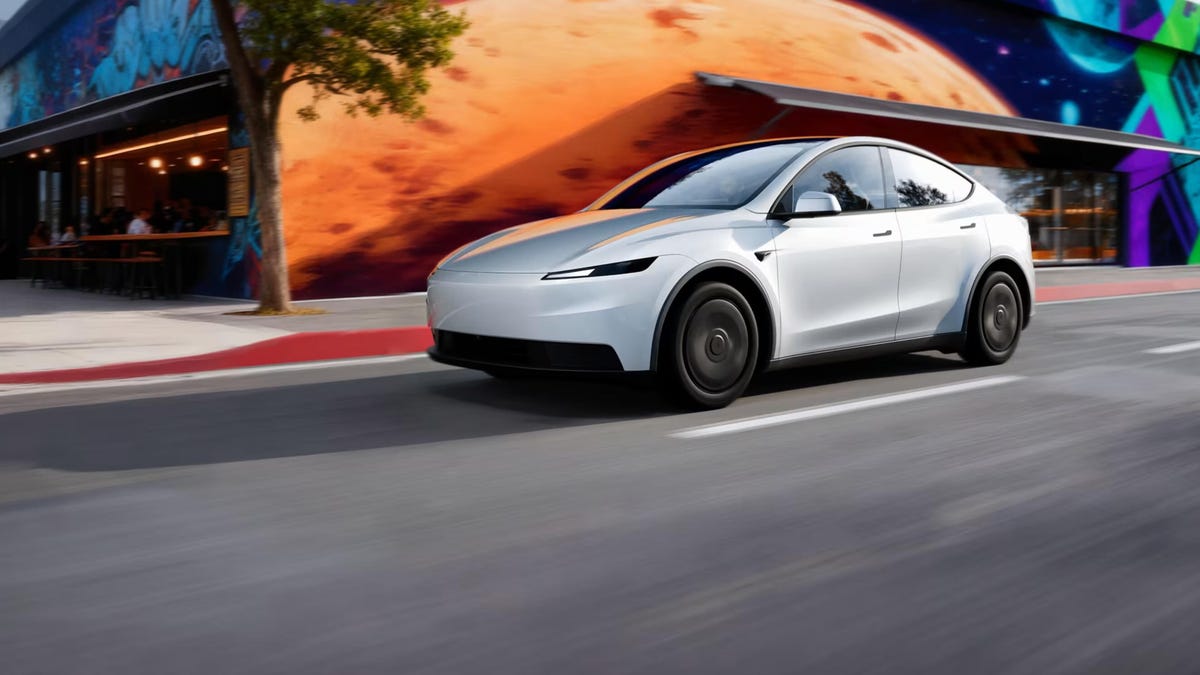Tesla has finally done what many electric car shoppers have been asking for: It has unveiled new entry-level versions of the refreshed Model Y and Model 3. As many expected, there isn’t an all-new car but rather more stripped-back configurations of the existing models that lower the entry price — making it easier for more buyers to step into Tesla ownership.
This is long overdue. As someone who’s spent plenty of time behind the wheel of both cars, I see this as a move that could significantly increase Tesla ownership. While the EVs have been appealling, the price has remained a sticking point for many. The idea is simple: make the same design and driving experience accessible to more people by cutting out the extras most owners rarely use — and in my view, that’s a smart move.
It comes at a time when electric vehicle shoppers will be looking for cheaper options. According to June figures from Kelley Blue Book, the average new vehicle transaction price in the US sits at $48,644. That’s 2% lower than the market peak in December 2023, but it’s still around 13% more than prices in June 2021.
What you get from Tesla’s more affordable electric vehicles
This is what the rear of the Tesla Model Y Standard looks like — it keeps the same light bar from the regular variant
The Model Y Standard Rear-Wheel Drive starts at $39,990 and delivers an EPA-estimated 321 miles of range, a 0-60 mph time of 6.8 seconds and a peak charging rate of 225 kW. It’s powered by a 69 kWh battery and produces around 300 horsepower. This variant uses one fewer battery module than the higher trims and is 5% more efficient than the Model Y RWD.
Inside, it features an open-concept center console similar to the Cybertruck, textile door and dashboard trim. There are 10-way driver and 4-way passenger seat controls now managed via the touchscreen with no physical buttons.
Tesla includes a 7-speaker audio system, auto high beams and dual-tone textile and vegan leather seats, but most of the cabin adjustments are manual. That includes the seats, steering wheel and mirrors. Only the front seats are heated, while the rear ones are not.
The rear passenger screen has been removed, but the car still includes a mobile charger. Up top, the glass roof is now closed off internally with a fabric headliner for better insulation, and the mirrors are manual-folding. Also, there’s no HEPA filter, only a particulate and odor filter.
The Model Y Standard rides on 18-inch wheels as standard, with 19-inch wheels available as an additional option, and offers 75 cubic feet of cargo space. Towing capacity comes in at 3,500 pounds, and curb weight sits at 4061 pounds. It supports Tesla’s well-established Supercharging network and can add up to 160 miles in about 15 minutes. This variant is currently available only in three colors: Stealth Grey, Pearl Multi-Coat White and Diamond Black.
The front of a Tesla Model 3 Standard driving along a road — it looks identical to the regular Model 3.
Meanwhile, the Model 3 Standard Rear-Wheel Drive now starts at $36,990 and shares many of the same hardware and software characteristics. It has the same 69 kWh battery, delivers 321 miles of EPA range and accelerates from 0 to 60 mph in 5.8 seconds thanks to 286 horsepower. Tesla has added a front bumper camera with a washer like the Model Y, uses vegan leather and textile seating and has touchscreen-controlled seat adjustments instead of physical switches. There are manual second-row folding seats, a manual-adjust steering wheel and mirrors and no rear heated seats or ventilation.
It retains the glass panoramic roof, but has acoustic front door glass and tempered rear glass. The rear screen has been removed, and the center console now features uncovered cupholders. It also features a 7-speaker audio setup and the same 15.4-inch touchscreen that dominates the interior. Charging speeds are identical at up to 225 kW, and Tesla claims up to 170 miles of range can be added in 15 minutes. It weighs 3,759 pounds and has 24 cubic feet of cargo space. This trim offers the same three paint choices as the more expensive options.
Both cars ship with manual second-row air vents, ditch the LED strips in favour of footwell and door-pocket ambient lighting only, and come with standard LED headlights with auto adaptive high beams (no matrix LEDs). Interestingly, they also omit Autosteer, though they come with traffic-aware cruise control as standard. Full Self-Driving is optional, available for $8,000 or via a $99 monthly subscription. Tesla is offering the same four trim levels for each model: Standard, Premium RWD, Premium AWD and Performance.
I think this new approach makes a lot of sense for Tesla. Instead of chasing the luxury end of the market, this brings the focus back to what originally made the brand so popular: offering long-range, fast-charging, affordable electric vehicles that still feel cutting-edge. By trimming back on extras, the company has created an option that could appeal to first-time EV buyers who might otherwise look at cheaper rivals. In my experience, Tesla’s biggest strength has always been its software and driving dynamics, and those remain intact here. For anyone on the fence about making the switch to an EV, these new versions of the Model 3 and Model Y could be the most convincing reason yet.
Pricing for the Model Y Standard starts at $39,990, while the Model 3 Standard follows closely behind at $36,990. Global pricing has not yet been announced, but expect it to also undercut the existing Long Range model. For now, this is the most accessible way to buy a Tesla.
Read the full article here


